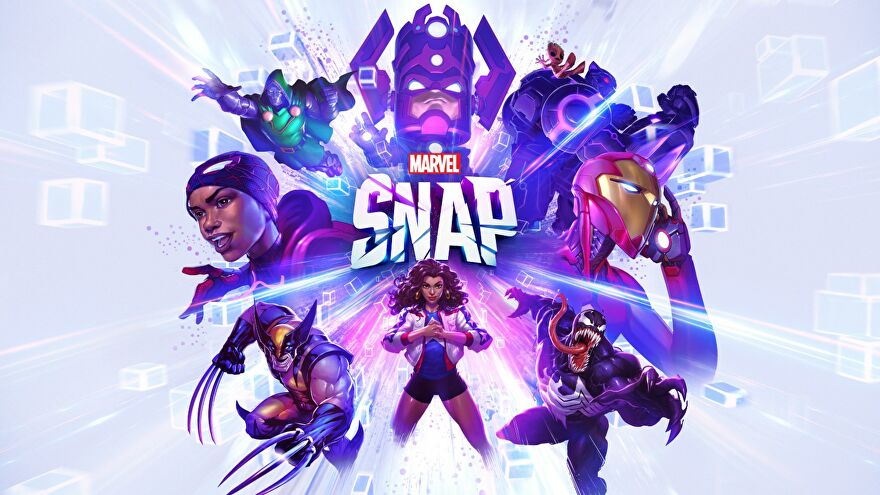Marvel Snap is the new hot CCG ( Collectible Card Game ) coming up ( still in beta at the time of the writing ), made by Second Dinner, which was co-founded by ex-Blizzard employees, including Hearthsone ex-game director, Ben Brode.
The goal of this post is to give a broad overview of the game ( along with some opinions, so maybe it’s a review now ? ) so it can serve as a reference for futur posts explaining certain game mechanics.
I’m not gonna lie, I love the gameplay of this game, and find it a perfect fit for mobile. It’s fun, it’s fast and the art and effects are gorgeous.
What I really like about it is that the team really tried to NOT have a re-enactment of Magic, Hearthstone and the likes, whether it’s on the gameplay side, or the card collection process. So let’s talk about that.
Gameplay

The gameplay is quite original for a CCG, as in you don’t have to take down your adversary health points by attacking them with minions and spells, but rather, you have to control two out of the three locations presented to you by having more power there than your opponent.
You get power to the location by playing cards on it, and you play cards using energy, which you get one additionnal a turn, starting at one ( so 1 on turn 1, 2 on turn 2 and so on ).
While the gameplay is nothing completely new, as boardgames such as Smash Up or Shotten Totten already made good use of that kind of territory control, it’s novel enough in the CCG space.
The other neat point about the game is the compactness of it all.
Each game lasts only 6 turns ( with a few exceptions ), so each one is quite short, a few minutes at best.
The two players also play at the same time, and the turns resolve when both have hit the end turn button ( or a timer is down to zero ).
You deck is made up of only 12 cards, no duplicates, and you get 3 cards at the beginning, plus one card a turn, which means a regular game with no other draws will let you see 9 cards, that’s 75% of your deck, making each card impactful as you will draw it on average in 3 out of 4 games.
That remaining 25% is enough to give all matches a fresh feel ( Will I get my combo pieces ? or my big 6-cost finisher ? ) but is still less variance than bigger decked games like Hearthstone for instance ( 30 cards ).
So to add more depth and uniqueness to each game, here comes the locations.


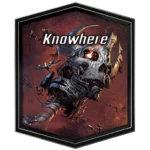
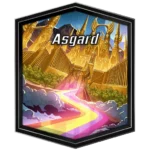
Each location has a special ability, and there are three of them. They start out undiscovered, with no effect, and are revealed one a turn.
This mean playing at a undiscovered location is a bit of a gamble. You might get lucky and get Sanctum Sanctorum where you can’t play cards once revealed, so that puts you at a big advantage if your opponent doesn’t any mean of getting a card there ( by moving, or summoning one for instance ), or you can get Murderworld and see your card destroyed after turn 3.
In practice, I’ve seen a lot of people play on undiscovered locations on turn 1 without much care, usually because it seems there is more upsides than downsides, and losing a 1-cost card is not that big of a deal.
Cards have different unique effects and triggers. The big ones being :
- On Reveal : the effect happens once when the card is revealed face up. ( All cards are played or summoned face down and reveal when the turn resolves. )
- Ongoing : the effect is continuous.
- Discard : Burn a card from your hand.
- Move : Allow a played card to change location.
- Destroy : destroy other cards.
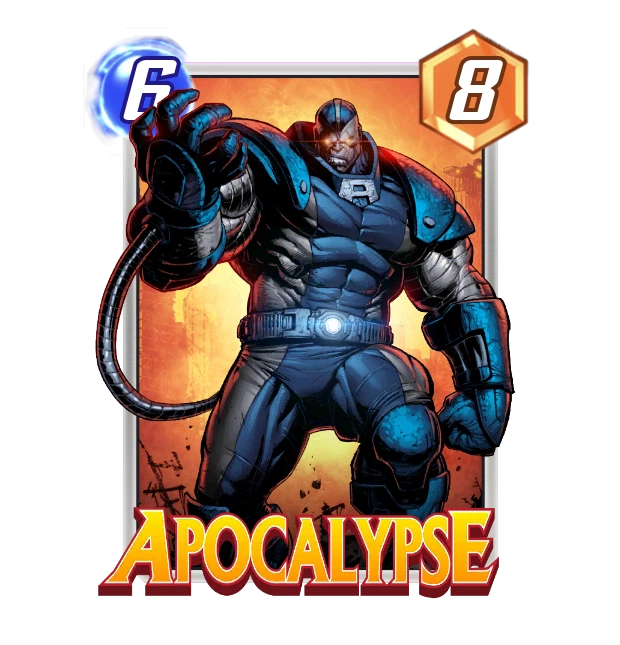
Those provide the framework to have deck archetypes.
For instance you can build a discard deck that uses the discard mechanic as an advantage, using cards like Apocalypse which comes back and grow by 4 power every time it’s discarded.
One cool thing is that you don’t really have to commit the whole deck to one mechanic, and it’s easy to mix and match, having only a few cards for combo and others as backup. I did have a good time with a move/destroy deck I made that took some players by surprise.
The final fun addition is the Snap mechanic that gave its name to the game. Each player gets a chance to Snap during a game, which doubles the amount of cubes you will gain, or lose, at the end of the game.
Cubes are the ladder currency, you need 10 of them to pass a level, and 10 levels gets you a new Rank ( bronze, silver, gold and so on, all the way to infinite rank, which I got this season ! \o/ ) and a reward.

Each game bets one cube, and doubles it on turn 6. You can then win/lose, [2, 4, 8] cubes if you go to the end, or [1, 2, 4] if you choose to retreat, depending on who snapped.
Knowing when to snap ( because you’re sure to win, or maybe you want to scare off your opponent by bluffing ? ) becomes a critical skill to climb the ladder, as well as knowing when to retreat to minimize the losses…. in theory.
In practice, I decided to be a bit reckless this season and I almost always went to the end of my games, even with snaps, and I still managed to get the highest rank without too much trouble. That might also be because there are a lot of bots running amok during the beta to make up for the low player count and they are easy to beat and snap freely, so I did enjoy some 8 cubes easy wins.
An interesting fact about snapping is that if you only go all the way when you are sure of winning and snap, and retreat all of the other times, you can climb the ladder with a 21 % Win Rate ( 4 cubes a win, -1 cube a loss means a 20% WR will keep you still ), if the other player snaps, you can go as low as a 12% WR ( 8 cubes a win, -1 cube a loss ), though it will be quite slow, but that means that if you are careful, you can climb the ladder more easily than in other card games, which is great for newcomers, casual players or just people than wanna play for fun, but might alienate the hardcore elitist players that think that their ladder rank somehow should reflect some kind of real life status. But who cares about those guys.
And that’s how you play Marvel Snap, now let’s talk about the meta progression and card collection.
Card Collection
In most CCG, you get cards by opening card packs, which are just loot boxes. You have different percentage of chances to get the cards, the most common ones being the most easy to obtain. Each card usually has a rarity level ( common, uncommon, rare, epic, legendary or some variant of that) which might impact gameplay or deckbuilding ( for instance, Hearthstone allows for only one copy of a Legendary card per deck, against two for all of the other rarities ).
This leads to a whole lot of monetization, and it usually take huge amount of money and/or luck to get all cards in a set.
Marvel Snap has a different, more convoluted approach, but one I believe is way less predatory.
Each card starts as an uncommon. Yes, even the big ones, the overpowered ones and season pass ones.
Then when you play games, at the end of each one, you earn Boosters for one of the card in your deck . You get 1 per turn, so usually 6 if you finished the match, 4 if you retreated on turn 4, etc.
You can also get boosters in the different reward tracks .
Get enough boosters and you can evolve your card, making it go to the next rarity level, using another currency called Credits.
You then get a cool cosmetic effect on your card, and some Collection points ( CP ), we’ll come back to those a bit later.
Here are the rarities, and the costs/rewards :
- Uncommon : base rarity.
- Common : 5 boosters and 25 credits, gives Frame Break effect and 1 CP.
- Rare : 10 boosters and 100 credits, gives 3D effect and 2 CP.
- Epic : 20 boosters and 200 credits, gives the Animated effect and 4 CP.
- Legendary : 30 boosters and 300 credits, gives the Shiny Logo effect and 6 CP.
- Ultra : 40 boosters and 400 credits, gives the Animated Frame effect and 8 CP.
- Infinity : 50 boosters and 500 credits, changes the frame color and gives 10 CP.
What’s really cool is that there is no exponantial cost to the upgrades, it’s all linear. So upgrading 2 cards from Epic to Legendary is the same cost and give the same amount of CP as upgrading one from Legendary to Ultra. So you don’t really have to think about it and can always upgrade your cards as soon as you can.
There is one notable exception : Getting a card to uncommon is 50% cheaper, surely as a way to incentivize players to try out new cards. It also usually takes one game to get enough boosters to do that, but remember that your card only has a 1/12 chance of getting selected.
So let’s recap ! Playing games gets you Boosters for your cards, when you have enough boosters for one card you can use Credits to upgrade it.
So now you know how to visually upgrade your cards, but we’re in a section called card collection and I’ve not yet talked about that. Well, I did tell you Marvel Snap way of collecting card was convoluted, and that’s where Collection Points come in.
When you get some CPs you increase your collection level on the collection track, and each level gives you various rewards, credits, boosters, gold or… cards !
As you climb the track, the levels get scarcers and you need more CP to reach one.
It’s important to note that it’s the only way to get cards*.
You can’t buy them in a store, you can’t craft them, you have to earn them by playing. Which is kinda awesome.
* ok, you can also get cards in the season pass, but those will become available in the track when the season is over.
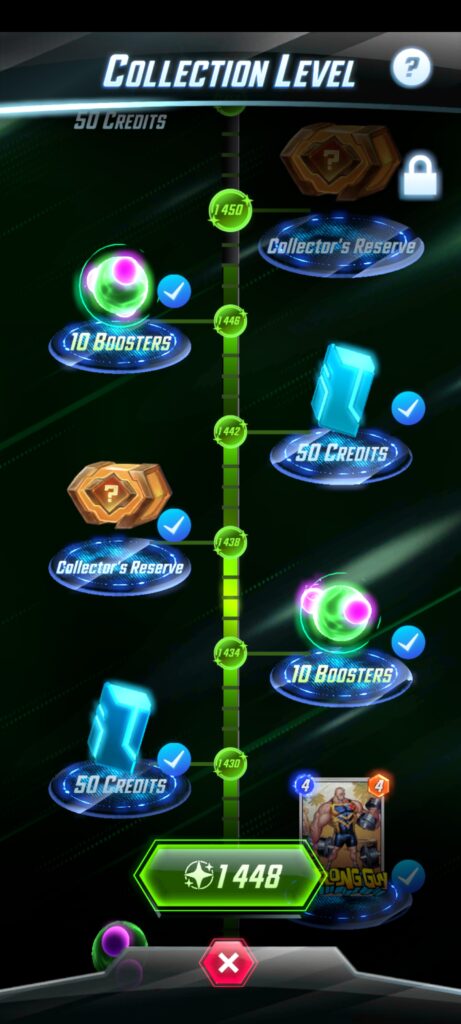
You get the cards, or a card variants, in the Collector’s Reserves ( it’s a loot box, you can also get the other types of rewards, like credits or boosters ).
Card variant are just cards with an alternate art. They count as another card, so you can upgrade them independently ( so getting variants helps you increase your collection track ), but they have the exact same gameplay effects as the base card. You can’t put a card and its variant in your deck though, they count as one for that.
I must admit that I’m not a big fan of the Reserves that are a relatively new addition ( before a patch, cards had specific slots in the track ) because of their random nature. Personally my goal is first and foremost to get new cards, so grinding only to get a few credits feels kinda bad, even variants can feel meh when you are desesperatly looking for a new card to test a new type of deck.
On the track, cards are divided into pools, and you have to get all of the cards from a pool before getting the other ones.
This is done to have some kind of control over the cards given to the players, to introduce new mechanics and easy to understand cards first.
There are 3 pools and almost all players will get all of the cards in pool 1 and 2 with ease. Pool 3 is where it gets more complicated.
- Pool 1 : 46 cards, up to collection level 214.
- Pool 2 : 27 cards, up to collection level 498.
- Pool 3 : 69 cards, level 498 +.
As you can see in the screenshot, I’m at collection level 1448 and I’m missing around 50 cards still.
And that’s where there is some mixed feeling about that way of giving cards to players.
One one hand, I’ve played for only two months and I’ve already got roughly 2/3 of the cards, which is pretty good !
Plus lots of cards from pool 1 and 2 are plenty strong and you can play super competitive decks with only those cards. So that’s good too.
On the other side, it can get difficult to build deck archetype as you have no control over what card you are getting. So if one is critical to a deck, well, you have to wait, and prey to get lucky soon.
So it can get a bit frustrating if you want to play super optimized decks, or just try out a deck that you just played against.
But that also mean that players have to get creative, and build with what they have, and sometimes, it leads to very fun decks that you never encountered before, which make the ladder a bit more varied than other CCG where everyone just netdeck the ones with the biggest winrate.
So overall I really like the meta progression of the game, and just think that some quality of live adjustements would make it less frustrating, like getting back the new cards slots in the collection track, or having a season pass that gives rewards at every level ( even if they are lesser ).
Oh ! I need to mention one last thing about card collection.
Let’s say you played the same deck, over and over and got all cards to Infinity rarity, then what ?
Do you have to change your cards or deck in order to keep grinding ?
The answer is no.
When a card get to Infinity you can split it, for free, and it gives you an uncommon copy of the card, with a new effect ( shiny, prismatic, black and white, etc ). You can then put that card into your deck and start a new round of upgrades. So in theory you could keep the same deck for years and years and still climb up the collection track with no issues.
NB : All of my split cards have given me a prismatic effect so far, that I don’t really enjoy, and I don’t know if that’s because that’s the only one in the game yet, if that’s a bug, or if i’m just unlucky.
I mentionned gold briefly ( the game hard currency) so I’m gonna do a little side rant about the monetization.
You can get gold through rewards, or buy it with real money, and then you can convert it to credits, or buy a variant of a card you already own.
So it’s all just for cosmetic or speeding up the upgrade rate a bit, nothing major ( yet ? ).
I personally find the real life money cost of gold to be super expensive, and any game proposing purchases of more than a few bucks should be considered with caution. Proposing 90$ purchases is opening the door to abuse, and there are some monetization strategies that feel a bit manipulative, like offering a 700 gold purchase for 10 bucks, while variants cost 750.
And remember that, like in all games, there is an assymmetry with hard currency.
It’s easy to think, “Hey ! The game just gave me 350 gold ! That’s 5 dollars ! ” but it’s really dangerous thinking.
Players give real money for hard currency, but any hard currency given does not equate to cash, it’s a store credit at best. An inconvenient one at that, as you can’t buy an item and then resell it to get your cash back.
So like with all games containing micro transactions, be mindful of how much you put into the game. Devs gotta eat, so putting in a few dollars is perfectly fine, just make sure you don’t spend more than you realistically should.
Conclusion
Marvel Snap is a really good game, the Marvel licence should bring in lots of new players, the fact that hearthstone veterans are making the game will help with the streamers, and everyone will stay for the fun and fast gameplay.
The team is still fiddling around with the monetization, and I have no doubt they will find the right balance. So far they have a good track record of listening to the players and have rollbacked controversial features like the nexus events that really were just expensive loot boxes, and like described in that post, the way players are getting cards should make it by definition less predatory than other CCGs.
You should definitely give this game a shot if you like card games, or the Marvel universe.
